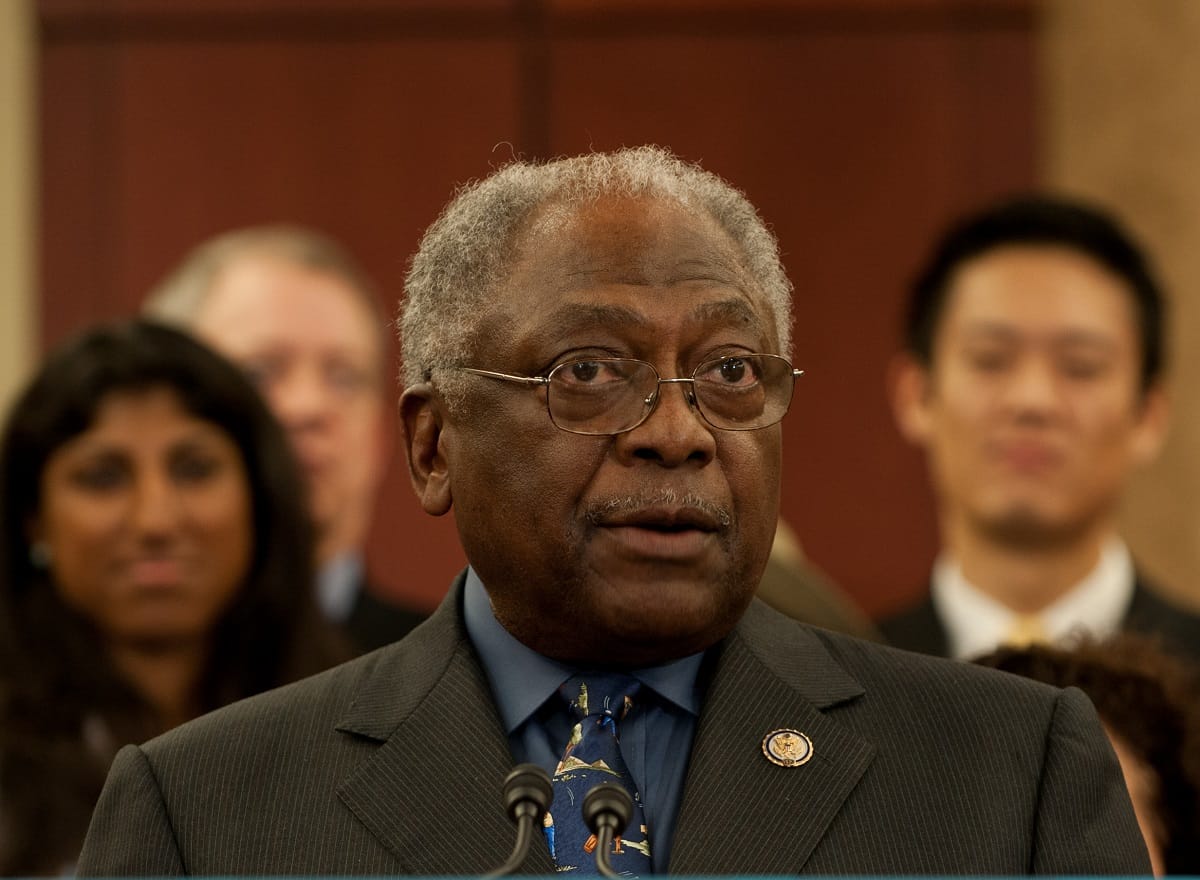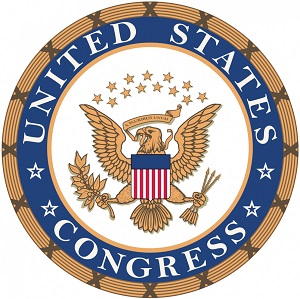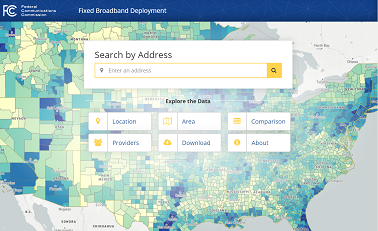Major Change on the Horizon? Explaining the Affordable, Accessible Internet for All Act
December 2, 2020 – As House GOP leaders ask the Government Accountability Office to audit the U.S. Department of Agriculture (USDA) ReConnect program because of concerns federal funds are being used to “overbuild,” Democratic leaders in the House and Senate have filed legislation that aims to build
Sean Gonsalves

December 2, 2020 – As House GOP leaders ask the Government Accountability Office to audit the U.S. Department of Agriculture (USDA) ReConnect program because of concerns federal funds are being used to “overbuild,” Democratic leaders in the House and Senate have filed legislation that aims to build broadband infrastructure on a national-scale.

The Accessible, Affordable Internet for All Act is a bill that harkens back to when the federal government – through FDR’s Rural Electrification Administration, established in 1935, and the Rural Electrification Act, passed by Congress in 1936 – invested in local cooperatives and brought electricity to the abundance of Americans still living in candle-lit homes without electrically-powered refrigerators.
The proposed legislation may well frame the Democratic agenda on broadband moving forward, as the Biden administration enters the White House in January. It’s a bold bill that has garnered the support of a who’s-who of broadband experts and advocacy organizations from Public Knowledge, the National Consumer Law Center and New America Foundation’s Open Technology Institute to the Benton Institute for Broadband and Society, the Electronic Frontier Foundation, and the National Digital Inclusion Alliance.
Breaking it Down
There’s a lot to unpack in this bill, which is why we are publishing a series of posts exploring the major sections contained in the proposed legislation. This first installment is the 30,000-foot view. Forthcoming posts will examine the legislative details where the devil – or the better angels – can be found.

Broadly, the Accessible, Affordable Internet for All Act calls for a $100 billion investment to build high-speed broadband infrastructure that targets unserved and underserved parts of the country. It aims to ensure that every household has affordable and reliable access to online education, telemedicine, remote work, and other business opportunities in which Internet connectivity can no longer be considered a mere luxury, but a necessity.
In the U.S. House of Representatives, the legislation, which has already passed in the House, is being led by House Majority Whip James E. Clyburn (D-SC) and members of the House Rural Broadband Task Force. The Senate version of the bill was filed in July by U.S. Senator Amy Klobuchar (D-MN), co-chair of the Senate Broadband Caucus, and is being co-sponsored by Senators Brian Schatz (D-HI), Mark R. Warner (D-VA), Ed Markey (D-MA), Cory Booker (D-NJ), Elizabeth Warren (D-MA), Catherine Cortez Masto (D-NV), Jacky Rosen (D-NV), and Vice President-Elect Kamala Harris (D-CA).
“When we invest in broadband infrastructure, we invest in opportunity for every American,” Klobuchar said when the bill was filed. “In 2020, we should be able to bring high-speed [I]nternet to every family in America — regardless of their zip code — and this legislation is a critical step to help bridge the digital divide once and for all.”
As has become apparent since the pandemic lockdown last spring, the “underserved (and unserved) communities” in America comprise a significant portion of the U.S. population. The Federal Communications Commission (FCC) estimates there are 18.3 million Americans who lack access to fixed broadband in the United States that meets minimum Internet access speed of 25/3 Megabits per second (Mbps). However, as we have reported numerous times here and discussed in various podcasts, the FCC maps almost certainly overstate actual broadband coverage. Some studies indicate the FCC is undercounting the number of people in the U.S. without fixed broadband access and that there may be as many as 41 million people without access.
The Accessible, Affordable Internet for All Act proposes to address the digital divide and encourage universal broadband access by:
- Allocating $80 billion to deploy high-speed broadband infrastructure across the nation.
- Earmarking $5 billion for low-interest financing of broadband deployment through a new secured loan program.
- Establishing a new office within the National Telecommunications and Information Administration to ensure efficient use of federal money.
It aims to ensure affordability by:
- Requiring an affordable option for Internet service plans offered on the newly-built infrastructure.
- Providing a $50 monthly subsidy for low-income consumers.
- Directing the FCC to collect and publicize data on prices charged for broadband service throughout the country.
The bill looks to promote adoption by:
- Providing over $1 billion to establish grant programs for states to close gaps in broadband adoption, as well as digital inclusion projects for organizations and local communities to implement.
- Including $5 billion to enable students without Internet at home to participate in remote learning.
- Authorizing funding for Wi-Fi on school buses so students can stay connected, especially in rural areas where longer bus rides are common.
A Wealth of Support, But No Guarantee
Joining a chorus of expert voices in support of the bill, Gigi Sohn – Distinguished Fellow at the Georgetown Law Institute for Technology Law & Policy, former senior adviser to FCC chairman Tom Wheeler, and one of a handful of names floated as a possible new FCC chair in the Biden administration – lauded the proposed legislation:
The Senate version of the Accessible, Affordable Internet for All Act includes all of the critical provisions of the House version, but goes even further to address this country’s gaping digital divide. Like the House bill, it addresses the twin problems of broadband affordability and lack of network infrastructure and seeks to promote competition in a consolidated market by preferencing open access networks and repealing state laws that prohibit communities from building their own broadband networks. In addition, the Senate bill would expand the FCC’s Rural Health Care program to provide funding for telehealth programs in urban as well as rural areas, and would create a fund to ensure that higher education students in need have access to robust broadband during the COVID-19 pandemic. The pandemic has laid bare the need for every American to have robust, high speed broadband Internet access at home … It is long past time for Congress to act. Thanks to Senator Klobuchar and her Senate colleagues for co-sponsoring this vital legislation. The Senate should pass this bill without delay.
Prospects for passage of the bill, however, hinges on the outcome of the U.S. Senate run-off races in Georgia, as was noted in an op-ed published in the Albany Herald last week, co-authored by Clyburn and Georgia Congressman Sanford Bishop. “The votes of Georgians on Jan. 5 will determine whether 1 million Georgians and millions more across America are swiftly connected to the [I]nternet so they can participate fully in 21st-century commerce, health care, and education,” they wrote.
If the Democrats prevail in Georgia, it would tip the scales of power in the U.S. Senate where, Clyburn and Bishop lament, “Senate Majority Leader Mitch McConnell, assisted by Sens. David Perdue and Kelly Loeffler, has buried the legislation in his graveyard.”
In the second installment of this series, we will dive into the “Title I – Digital Equity” section of the Accessible, Affordable Internet for All Act.
Editor’s Note: This piece was authored by Sean Gonsalves, a senior reporter, editor and researcher for the Institute for Local Self Reliance’s Community Broadband Network Initiative. Originally published on MuniNetworks.org, the piece is part of a collaborative reporting effort between Broadband Breakfast and the Community Broadband Networks program at ILSR.









Member discussion